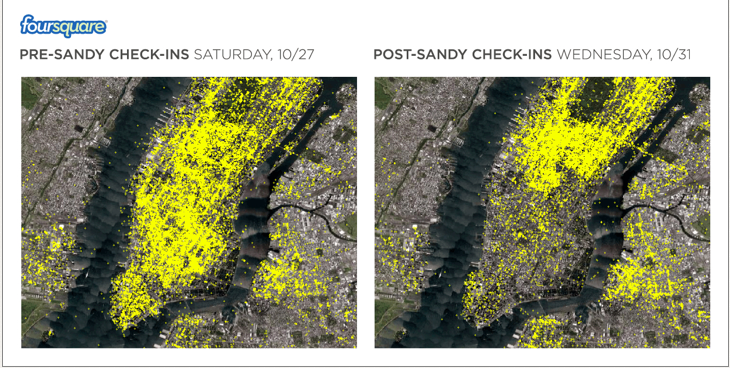Technology and Hurricane Sandy Recovery
Last month’s “superstorm” Sandy caused devastation throughout much of the mid-Atlantic, with many residents still recovering from the powerful and destructive storm. One person affected by Sandy was Sunlight’s technology adviser Micah Sifry, who lives in New York.
On the website TechPresident, he wrote about how New York public radio station WNYC initiated a crowdsourcing project to keep listeners informed in the hours, days and now weeks since the storm hit the city.
Here at Sunlight, we decided to take a look at the innovations created by technologists and ordinary citizens to help residents affected by the storm.
In Boston, CrisisCommons organized the Sandy CrisisCamp — a series of hackathons at MIT and around the world that brought together volunteers who could contribute to Sandy relief with communication technologies. You can read more about what the technologists did and the lessons learned at the remote hackathons here.
As mentioned above, WNYC was also quick to reach out to the public and encourage people to submit stories of what was happening in their surrounding communities — in real time. Listen to accounts of the storm from Long Beach to New Rochelle.
Another interesting innovation was the Sandy Coworking crowdmap. A #NYResponds initiative, the map lists spaces where people can work, recharge and reconnect. At the heart of #NYResponds is a message to encourage the tech community to get out and take direct action in the recovery process by providing tech skills and resources.

While some were hacking away Sandy-related problems, others such as journalist Debbie Galant put independent journalism to work. She used ScribbleLive — which curates and aggregates from social networks — to keep citizens informed of what was happening. Using ScribbleLive as a platform, Debbie created #NYSandyevent which was powered by NJ News commons to pull multiple news sources across the state on the hurricane.
In her excellent examination of lessons from Sandy about technology, relief and resilience, Deanna Zandt introduces the concept of grassroots tech solutions in disaster situations. We saw the role of the internet through tools such as the Occupy Sandy website, that became a focal point for people to get day-to-day supplies and updates about the storm.
Back in Boston, the MIT Center for Civic Media and HousingisaHumanRight.org joined hands and created StoryLine — a collaborative documentary for sharing experiences of Hurricane Sandy and relief efforts. Using any phone or mobile device, folks could create a story by calling or sending a text or picture message. To call or listen to other people’s stories dial (888)-803-9856 or send a text or picture message story to storyline@vojo.co
The folks over at Source also have an impressive collection of apps and tools from newsrooms in the US and UK with web apps, maps and data from the storm. Some of the striking tools were an imbeddable evacuation zone map and a New York/New Jersey transit tracking tool.
As the recovery process continues, it’s worth noting that technology is transforming the way we react and respond towards natural disaster. Take an example of Instagram. The tool’s CEO was quoted as saying there were “…10 pictures per second being posted with the hashtag #sandy…” It’s no wonder the 80 million user mobile app was a go-to tool during Sandy. For some, this may have been the first and only way they learnt about the disaster.
Which tech tools did you come across or use during superstorm Sandy? Maybe you know a few apps that have been used during disaster situations. Please feel free to share in the comments.

